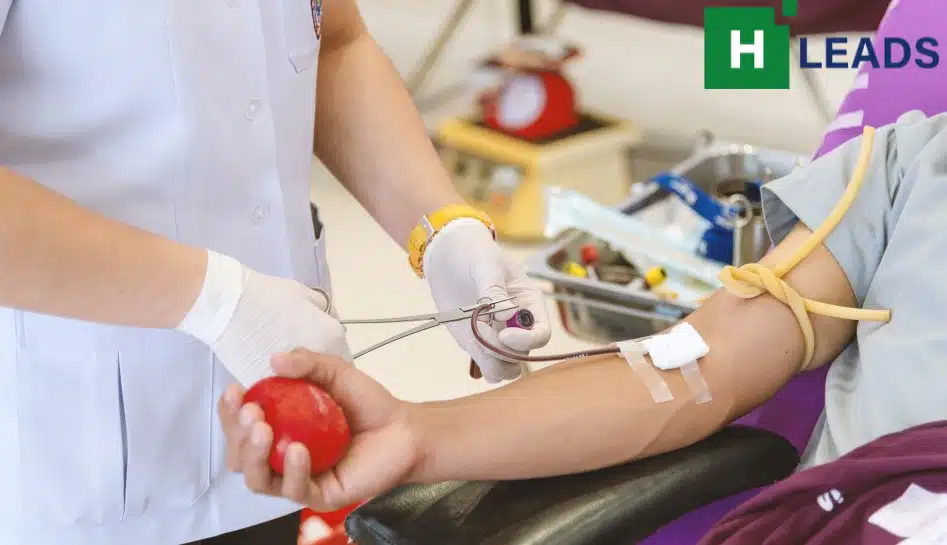In low-income countries, up to 54 percent of blood transfusions are given to children under 5 years of age, whereas in high-income countries, the most frequently transfused patient group is over 60 years of age
Forty percent of the 118.5 million blood donations collected globally comes from high-income countries, affecting access to safe blood and blood products in low- and middle-income countries, the World Health Organisation said on June 14, the World Blood Donor Day.
The Day provides a special opportunity to celebrate and thank voluntary blood donors around the world for their gift of blood and has become a major focus for action towards achieving universal access to safe blood transfusion.
The slogan for 2023 World Blood Donor Day campaign was “Give blood, give plasma, share life, share often.’
During this year’s celebrations, the focus was on patients requiring life-long transfusion support. It also highlighted the importance of giving blood or plasma regularly to create a safe and sustainable supply of blood and blood products that can be always available, all over the world, so that all patients in need can receive timely treatment.
WHO said, every single donation is a precious lifesaving gift and repeat donation is the key to building a safe and sustainable blood supply.
“One of WHO strategies is to assist low- and middle-income countries in improving the availability and quality of human plasma, including optimising the utilisation of the plasma recovered from whole blood donations, and increasing patients’ access to the life-saving plasma protein therapies,” the WHO said.
In low-income countries, up to 54 percent of blood transfusions are given to children under 5 years of age; whereas in high-income countries, the most frequently transfused patient group is over 60 years of age, accounting for up to 76 percent of all transfusions.
Based on samples of 1000 people, the blood donation rate is 31.5 donations in high-income countries, 16.4 in upper-middle-income countries, 6.6 in lower-middle-income countries and 5.0 in low-income countries.
“Blood transfusion saves lives and improves health, but many patients requiring transfusion do not have timely access to safe blood. Providing safe and adequate blood should be an integral part of every country’s national health care policy and infrastructure,” the WHO said.
The WHO recommends that all activities related to blood collection, testing, processing, storage and distribution be coordinated at the national level through effective organization and integrated blood supply networks. The national blood system should be governed by national blood policy and legislative framework to promote uniform implementation of standards and consistency in the quality and safety of blood and blood products.
In 2018, 73 percent of reporting countries, or 125 out of 171, had a national blood policy. Overall, 66 percent of reporting countries, or 113 out of 171, have specific legislation covering the safety and quality of blood transfusion.
Key facts
An increase of 10.7 million blood donations from voluntary unpaid donors has been reported from 2008 to 2018. In total, 79 countries collect over 90 percent of their blood supply from voluntary unpaid blood donors. However, 54 countries collect more than 50 percent of their blood supply from family/replacement or paid donors.
Only 56 of 171 reporting countries produce plasma-derived medicinal products (PDMP) through the fractionation of plasma collected in the reporting countries. Nine one countries reported that all PDMP are imported. Sixteen countries reported that no PDMP were used during the reporting period, and 8 countries did not respond to the question.
The volume of plasma for fractionation per 1000 population varied considerably between the 45 reporting countries, ranging from 0.1 to 52.6 litres, with a median of 5.2 litres.
Data about the gender profile of blood donors show that globally 33 percent of blood donations are given by women, although this ranges widely. In 15 of the 113 reporting countries, less than 10 percent of donations are given by female donors.
The age profile of blood donors shows that, proportionally, more young people donate blood in low- and middle-income countries than in high-income countries. Demographic information of blood donors is important for formulating and monitoring recruitment strategies
Also Read: Five rarest blood types in humans


















Add Comment